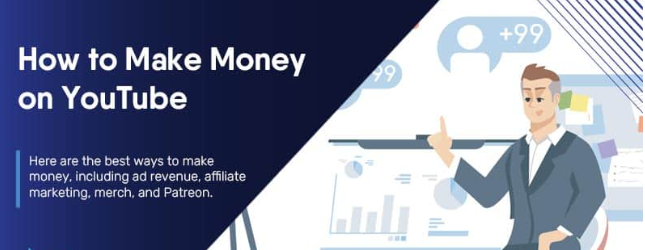Are you sure of blogging properly? And if you were killing your blog with trivial ones instead errors?
If you have decided to start a blog or post “fresh” content on your website, then you have made the right decision; statistics prove that blogging is one of the main sources for the creation and growth of an online business. Here are some interesting statistics from a :
- 15% of content strategy activities are based on blogs;
- 20% of the metrics that are tracked by marketers concern the traffic on their website (and I would like to point out that the blog is a real traffic magnet);
- The website is the main channel for promoting one’s business;
- 65% of marketers invest in SEO;
- The most used marketing tactic is to create exclusive content for your customers.
Whether you represent yourself or your company, creating a blog that gets results can offer you a tremendous opportunity.
So beware of anything that could lead your blog to failure !
The 6 mistakes that will kill your blog
1. Don’t blog frequently enough
Among the most frequent mistakes of those who manage a blog is the lack of consistency. Posting content on a consistent basis is useful for at least two main reasons:
- Google prefers blogs that offer new and updated content, so this will also benefit the positioning of your website in terms of SEO and PageRank
- Your readers will come back to check for new content, and will expect to find more when they view your homepage.
Try to post on your blog 8 times a month, or if you can’t, post at least one article a week. You should always release new posts on the same days of the week.
You’ll see, consistency will reward you in the long run.
Beyond consistency, you will have to avoid not developing valuable titles.
2. Don’t develop great titles
Of the Poor and meaningless headlines will kill your blog and will detract from the value of your content, even if it is of high quality.
Do not underestimate the importance of the title for a blog: it is on the basis of it that the reader will choose whether or not to access your articles, when they will be proposed together with all the others.
Treat each title as if it were the text of an advertisement; always try to catch the reader’s attention.
Write headlines that are clear, resonant and that include keywords relevant to the content: if you don’t fulfill the promise made in the title, it will be difficult for the reader to choose your articles again instead of those of others.
Use terms that are exciting, provocative and at the same time inform the reader about the topics covered.
Spending a few more minutes producing great headlines for your posts can increase traffic to your site by over 20%, but if you only focus on yourself or your products, it won’t do you any good.
3. Focus on you and not your audience
Everyone, by nature, likes to talk about themselves: ” I did this, I managed to do that, I’m the best at …, etc.”
But you know what?
The reader doesn’t care about you, the reader is only interested in solving their own problems: when they arrive on your blog, they don’t want to be faced with sales letters.
He just wants something that somehow benefits him.
Offer insights and useful information that will make your blog a valuable resource, and they will trust you by returning to visit your blog.
Just talking about you, or why your products are so special, are serious mistakes in a blog. Rather it speaks of the benefits and value that the reader can derive from it.
Offer free information and advice they won’t find anywhere else. All the trust that you will build in doing so will convert readers into potential customers, and eventually into final customers, or into “ambassadors” of your products (those who will recommend them to others).
In order not to kill your blog, you should also avoid neglecting SEO optimization.
4. Don’t optimize your content for SEO
You should always blog with things like ease of reading and search engine optimization in mind.
If you produce well-written and formatted content, you will have already completed most of the SEO optimization work .
Write with the user in mind and this will spend more time on your website, which will positively affect Google’s consideration of your blog and content.
Your blogging strategy involves researching a keyword list. Insert them within your articles in a relevant and fluent way and avoid forcing.
Adding links also helps your blog in terms of SEO. Identify resources that can make the reader better understand and deepen the topic you are talking about, and link to them in the post.
Optimizing your blog for SEO won’t do any good if you don’t spread the word about your content.
5. Do not share (continuously) on social channels
You will also be able to write the most captivating and attractive titles in the world, and produce the best, most interesting and educational content on the face of the earth, but they will be of no use if anyone ever gets to read them.
Promoting your posts through sharing on social networks should be a backbone in your blogging strategy . Make sure you share your posts, not once, not two or three times. Do this continuously (avoiding spam , of course).
In particular, re-share the most popular and the most recent posts in your social profiles.
Install the plugin for the share buttons for Twitter , Facebook , LinkedIn and Pinterest, so show them the beginning and end of each of your posts, and maybe even sideways.
The reader is lazy and very often has to have them under their nose to propose your content to their network.
When you have produced excellent content and your readers will arrive on your site, in order not to kill your blog you will also have to avoid neglecting a conversion strategy to turn them into potential customers.
6. Implement a blogging strategy that neglects conversions
As part of your blogging strategies, you need to put in place a plan to convert readers into customers. Another of the most frequent mistakes of those who open a blog is in fact to consider it as a simple diary in which to publish good content, neglecting the fact that a blog can be an excellent source of income .
You could start by adding a small subscribe button to invite visitors to subscribe to your blog.
If the reader likes your content, he will be willing to leave you his email address, which you can use to “nurture” the contact with the contents and build a relationship of trust with him, to the point of turning him into a customer.
Direct readers to other resources within your website where they need to register for more in-depth information.
Conclusion
No matter what content-based strategies you are implementing, blogging will help you attract new potential customers, the main source of livelihood and growth of any online business.
Post consistently, create impactful headlines, write reader-facing content, optimize it for SEO and share it on social media.
Finally, also remember to plan a way to convert readers into (possible) customers – unless you are doing it to become famous, this is the real goal you are blogging for.
Do you have any questions or concerns about how to create a blog that leads to results?
Have you ever learned the hard way that there are mistakes you shouldn’t make?




